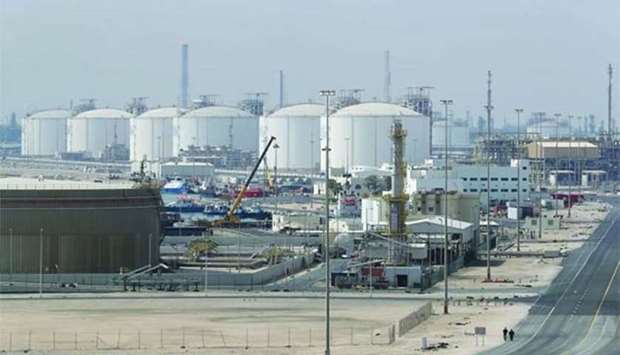Capital Intelligence (CI), the international credit rating agency, has affirmed Qatar’s long-term foreign and local currency ratings of ‘AA-’ and short-term foreign and local currency ratings of ‘A1+’ despite the ongoing Gulf crisis.
"Qatar’s ratings are supported by the country’s substantial economic wealth,” CI said, adding the country is the world’s third largest producer of natural gas after Russia and Iran and is by far the largest exporter of liquefied natural gas (LNG).
According to the International Energy Association, the country has proven natural gas reserves of around 883tn cubic feet with a reserve to production ratio of around 58 years. Qatar’s prudent investment in large-scale LNG has contributed to one of the highest levels of GDP (gross domestic product) per capita in the world, estimated at $64,447 in 2017.
At present, Qatar remains a "comfortable" net external creditor, CI said, adding the sizeable foreign assets under the management of the Qatar Investment Authority (QIA), which are reported to be around $340bn (195% of GDP in 2017), provide the country with the capacity to absorb exogenous shocks and mitigate concentration risks arising from the dependence on hydrocarbons.
Although deemed strong, the government's external asset position, including the assets of QIA, are expected to remain under increasing pressure and future withdrawals to finance the budget or support the banking system and GREs (government related entities) may be required should regional tensions intensify or become prolonged. Tensions are also likely to trigger higher financing risks. CI also notes that in view of the limited disclosure of the level and asset classes of the assets held by QIA, it is difficult to assess the impact of the boycott on these assets.
The central government budget is expected to post a higher-than-expected deficit of about 7.7% of GDP in 2017 (which ends in March), due to higher spending and weaker revenues.
Based on the assumption that hydrocarbon prices are likely to pick up slightly in the short to intermediate term, CI expects the budget deficit to narrow to 2.9% of GDP in 2018. However, should hydrocarbon prices be lower than its expectations, this could lead to higher than projected deficits in the absence of substantial fiscal consolidation measures.
Nonetheless, gross government debt remains moderate, albeit now on the rise, at an estimated 51% of GDP in 2017. Taking into consideration the debt of GREs, overall public debt is probably equivalent to about 85% of GDP, which is relatively high compared to other similarly rated sovereigns in CI’s ratings universe, the rating agency said.
Qatar’s ratings remain constrained by economic concentration risk and fiscal rigidity, notwithstanding recent reforms aimed at diversifying the economy. In addition, the country’s public institutional framework is still at relatively early stages of development and fiscal transparency – while improving – is not high.
According to the International Energy Association, the country has proven natural gas reserves of around 883tn cubic feet with a reserve to production ratio of around 58 years. Qatar’s prudent investment in large-scale LNG has contributed to one of the highest levels of GDP (gross domestic product) per capita in the world, estimated at $64,447 in 2017.
At present, Qatar remains a "comfortable" net external creditor, CI said, adding the sizeable foreign assets under the management of the Qatar Investment Authority (QIA), which are reported to be around $340bn (195% of GDP in 2017), provide the country with the capacity to absorb exogenous shocks and mitigate concentration risks arising from the dependence on hydrocarbons.
Although deemed strong, the government's external asset position, including the assets of QIA, are expected to remain under increasing pressure and future withdrawals to finance the budget or support the banking system and GREs (government related entities) may be required should regional tensions intensify or become prolonged. Tensions are also likely to trigger higher financing risks. CI also notes that in view of the limited disclosure of the level and asset classes of the assets held by QIA, it is difficult to assess the impact of the boycott on these assets.
The central government budget is expected to post a higher-than-expected deficit of about 7.7% of GDP in 2017 (which ends in March), due to higher spending and weaker revenues.
Based on the assumption that hydrocarbon prices are likely to pick up slightly in the short to intermediate term, CI expects the budget deficit to narrow to 2.9% of GDP in 2018. However, should hydrocarbon prices be lower than its expectations, this could lead to higher than projected deficits in the absence of substantial fiscal consolidation measures.
Nonetheless, gross government debt remains moderate, albeit now on the rise, at an estimated 51% of GDP in 2017. Taking into consideration the debt of GREs, overall public debt is probably equivalent to about 85% of GDP, which is relatively high compared to other similarly rated sovereigns in CI’s ratings universe, the rating agency said.
Qatar’s ratings remain constrained by economic concentration risk and fiscal rigidity, notwithstanding recent reforms aimed at diversifying the economy. In addition, the country’s public institutional framework is still at relatively early stages of development and fiscal transparency – while improving – is not high.


